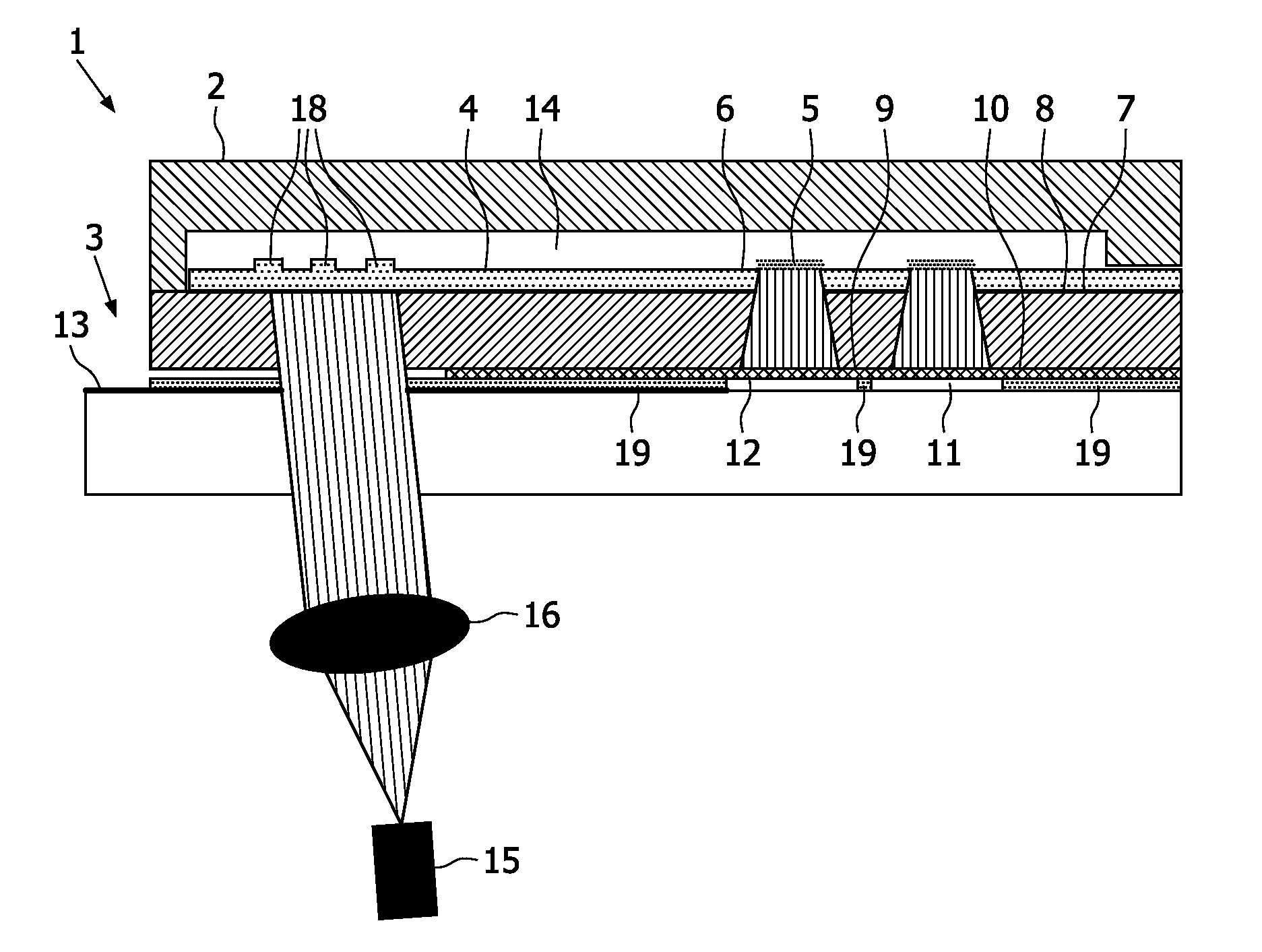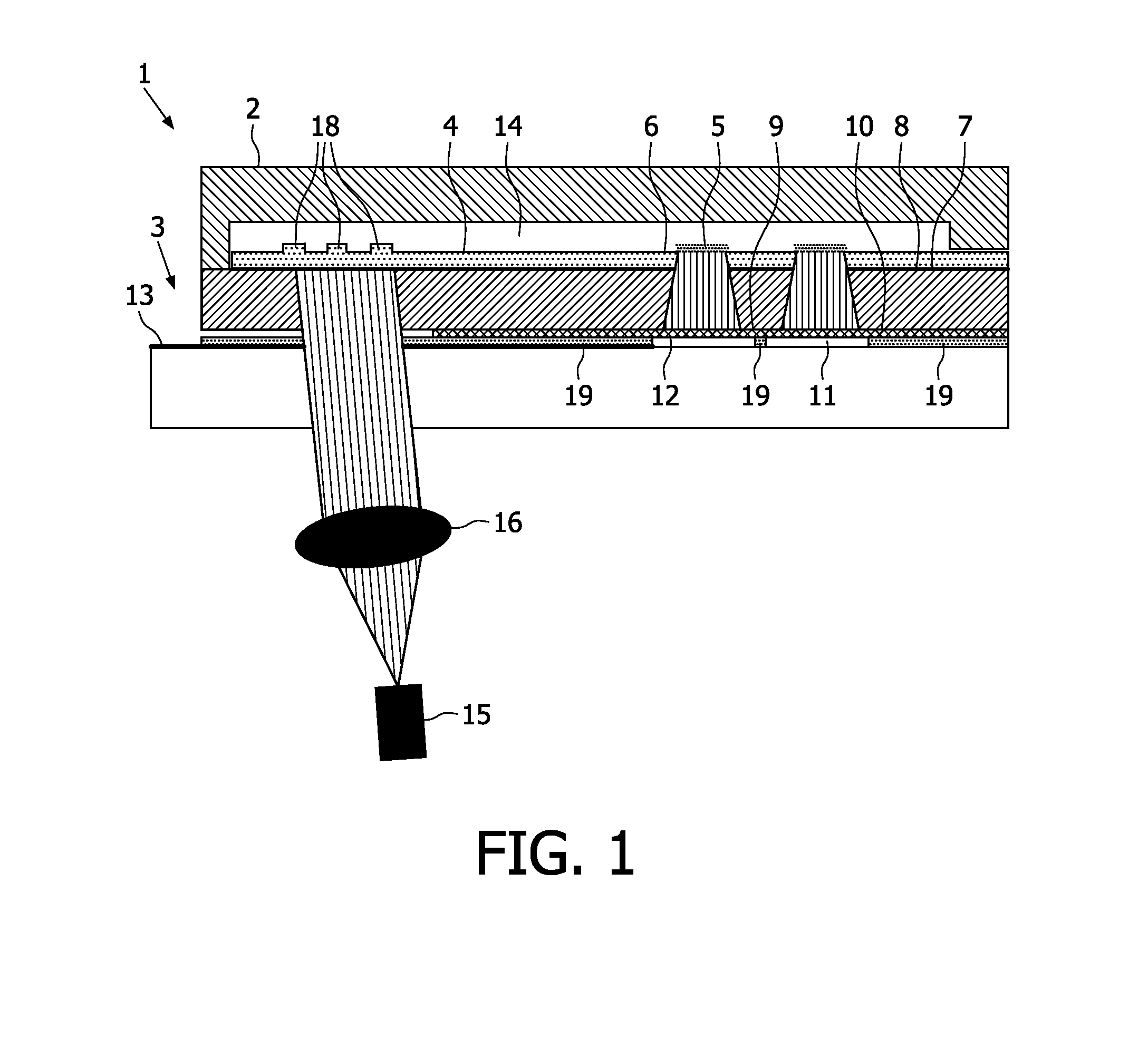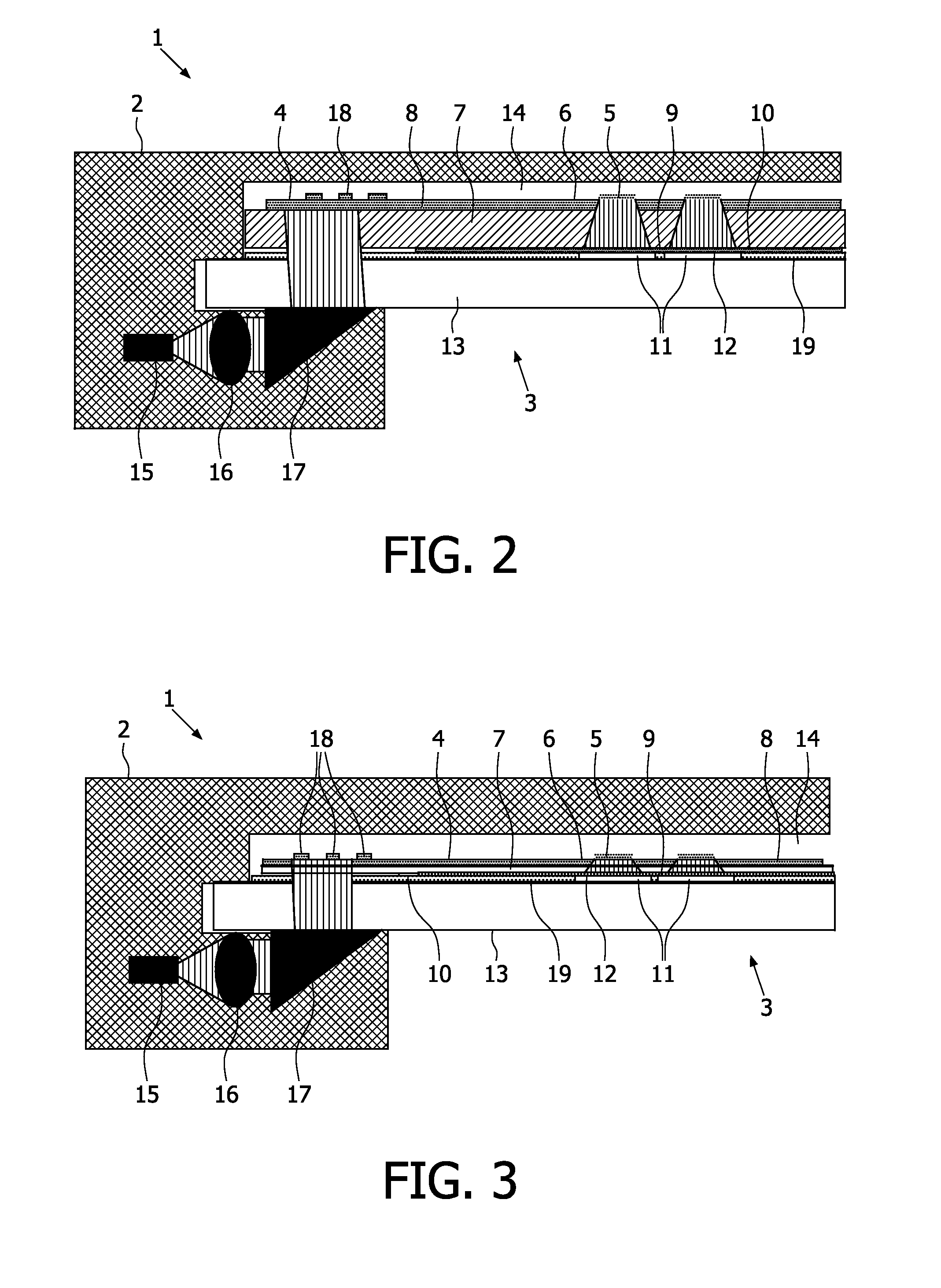Biosensor with evanescent waveguide and integrated sensor
a biosensor and waveguide technology, applied in the field of evanescent field based sensor systems, can solve the problems of more accurate and complex, further drawbacks, and inability to meet the needs of users,
- Summary
- Abstract
- Description
- Claims
- Application Information
AI Technical Summary
Benefits of technology
Problems solved by technology
Method used
Image
Examples
Embodiment Construction
[0121]FIG. 1 shows an evanescent field induced sensor system 1 useful in diagnostic applications with an housing 2. The housing 2 is arranged on top of an integrated waveguide sensor 3. The integrated waveguide sensor 3 comprises a polymer waveguide layer 4 of polyethersulfone (PES) with a thickness of 250 nm and a refractive index of n2=1.65 on a cladding layer 7 of polymethylmethacrylate (PMMA) with a thickness of 1 mm and a refractive index of n3=1.49. On top of the upper outer surface 6 of the polymer waveguide layer 4 capture compounds 5 are arranged to detect a specific chemical substance. On the upper outer surface of the polymer waveguide layer 4 a grating structure of a plurality of recesses 18 for enhancing the coupling of the light wave into said transparent polymer waveguide are arranged. Alternatively, the grating structure can also be present at the interface between the cladding layer and the wave guiding layer. Between the upper outer surface of the polymer waveguide...
PUM
| Property | Measurement | Unit |
|---|---|---|
| refractive index | aaaaa | aaaaa |
| thickness | aaaaa | aaaaa |
| thickness | aaaaa | aaaaa |
Abstract
Description
Claims
Application Information
 Login to View More
Login to View More - R&D
- Intellectual Property
- Life Sciences
- Materials
- Tech Scout
- Unparalleled Data Quality
- Higher Quality Content
- 60% Fewer Hallucinations
Browse by: Latest US Patents, China's latest patents, Technical Efficacy Thesaurus, Application Domain, Technology Topic, Popular Technical Reports.
© 2025 PatSnap. All rights reserved.Legal|Privacy policy|Modern Slavery Act Transparency Statement|Sitemap|About US| Contact US: help@patsnap.com



